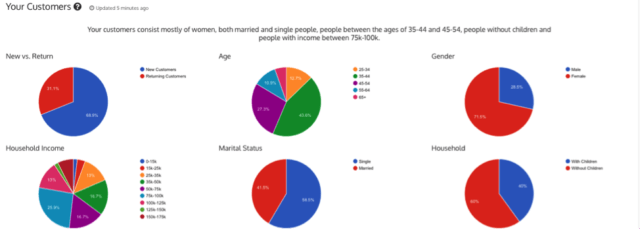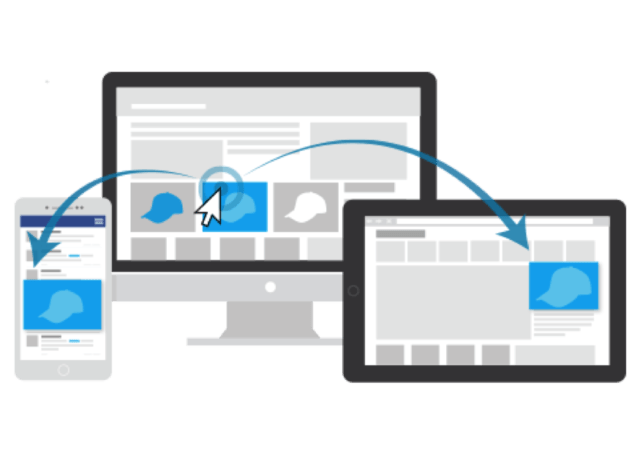Many digital marketers spend weeks leading up to the holiday season putting the finishing touches on their holiday marketing campaigns. With eCommerce sales expected to reach $114 billion between November and January this year, it’s only logical for you to be hyper-focused on your eCommerce performance over the coming weeks.
If you’re ready to grow your brand and scale your business, it’s important to stay on top of online shopping trends. By knowing which exciting new developments are shaping eCommerce, you can stay one step ahead of your competitors.
To help you prepare your business beyond the holiday season, here are some the top eCommerce trends that are predicted to move the needle in 2018.
Seizing Opportunities Through Micro-Moments
Today’s consumers are highly connected, and this has a significant impact on their online behavior and expectations. With technology at hand, they can find the answers they need at the exact moment they need them.
Google calls these experiences ‘micro-moments,’ which occur when consumers search to find answers that allow them to make informed purchase decisions. With the rise of machine learning and voice search, these micro-moments are multiplying and will only become more prevalent in 2018. Being the sought-after “answer” to micro-moment questions is imperative to your online success.
Use Smart Automation to Delight Customers
As online marketing techniques continue to mature, smarter marketing automation is quickly becoming a necessity for eCommerce marketers. An automated solution allows businesses to streamline marketing efforts, gather data and distribute content to the right audience at the optimal time.
With the right marketing automation tool, you can better understand your customers, nurture leads at every stage of the customer journey and make your workflow automatic. Consider it an investment that will allow you to scale your business for future growth.
Embrace Omnichannel Marketing
Micro-moments can happen anywhere, at any time. Are you currently marketing across various devices or channels to make your brand stand out?
By now, you’ve probably heard of omnichannel marketing — a strategy that aims to provide a seamless shopping experience across all marketing channels and devices. In fact, you may already be leveraging the power of the omnichannel for your holiday marketing campaigns.
For those who aren’t currently developing a cross-channel approach, it’s time to jump on board. Whether your target audience is engaging with you on Facebook, reading your blog or browsing products within your physical store, they expect a consistent brand experience.
To deliver this, try getting to know your customers on a deeper level. Understanding how and where your ideal customer shops will help deliver a more unified shopping experience.
Additionally, it’s important to diversify your marketing channels. Considering how Amazon is the preferred starting point for product searches, you may want to consider selling your products on Amazon in addition to your eCommerce site to expand potential customer touchpoints.

Increasing Importance of Video
As marketers come up with new ways to engage audiences, video has become an essential format in their content marketing strategy. Statistics show that video marketing is extremely effective, managing to boost click-through rates by 200-300 percent and increase purchase intent by 97 percent.
Despite these statistics, video remains a largely untapped channel for many eCommerce brands. Perhaps the biggest reason is due to a tight marketing budget, which makes it difficult for small- to medium-sized (SMB) business owners to leverage the power of professional video advertising — until now.
Video Marketing Made Easy
Small-business owners are quickly realizing that their brands are destined to fall behind if they don’t start incorporating video into their content marketing strategy. Fortunately, the recent video craze has made it easier for small and medium-sized businesses to get in on the action.
New apps and platforms that allow users to easily create affordable videos are constantly hitting the market. For example, Slidely allows users to create video slideshows and clips that are ready for social sharing while Wistia offers video analytic features (like heat maps) to show you where viewers watched or stopped watching your videos.
Overcome the Fear of Live Video
Not only is a live video a more affordable option for digital marketers, it also drives 300 percent more engagement than non-live videos. Social media platforms have recognized the demand for live video, and they are adding new features such as face filters on Instagram and interactive streaming video by Amazon Live.
Live streaming may be intimidating, but there is no easier or affordable way for small brands to drive engagement and conversions. Overcoming the fear of live video will be essential in the future.
Personalized Messaging is No Longer Optional
As devices and data become smarter, consumers now expect you to know what they need at the precise moment they need it. Delivering this experience is easier than you may think, now that you can segment your audience groups and target them in new ways. Once you have invested a robust personalization platform, you can provide relevant customer experiences and position your online store for future growth.
Laser-Focused Targeting
Brands are beginning to realize that taking a targeted approach to marketing is key to driving results. By leveraging geographical, behavioral and demographic data, digital marketers can create marketing campaigns that are personalized to specific audiences.
One of the best ways to leverage this data is through email marketing. When it comes to segmenting your email list, the world is your oyster.

Don’t have a big enough budget to offer free shipping this holiday season? Segment by geography and promote this offer to a single region. Want to drive more conversions on mobile? Target mobile users who took certain actions on your website and send them to a highly-personalized landing page. Launching personalized marketing campaigns is as simple or complex as you want it to be.
Smarter Ad Retargeting
Setting up ad retargeting is a must if you want to move your leads through the buyer’s journey towards conversion. This strategy uses both tailored messaging and targeted ad placement to bring your customers back for a purchase, and it’s extremely effective.
Platforms such as Facebook Advertising and Google AdWords are growing increasingly sophisticated with their retargeting options. For example, advertisers can now use Facebook Custom Audiences to target users who have visited their sites and added a product to a cart but failed to purchase. Studies show that this strategy works, increasing branded searches by 1,046 percent and lifting site visitation 726 percent after only four weeks of retargeted ad exposure.

Image via AdRoll.com
To get ahead of the competition, make room in your budget for dynamic retargeting. With a powerful strategy, your eCommerce brand can create and launch highly customizable dynamic ads and leave your competitors in the dust.
Taking Advantage of Native Advertising
In Q1 of 2017, the number of native ad buyers increased by 74 percent. In an industry plagued by ad-blockers, this shift is hardly surprising. Simply placing an ad to position your product in front of potential customers and hoping for a click is no longer a workable solution. These days, you have to work hard to earn a customer’s loyalty and trust. How can you do this successfully? That’s where native advertising comes into play. Native ads are paid forms of content that usually appear on business, entertainment or news sites.
Unlike programmatic ads, native advertising provides an ad experience that blends seamlessly into the platform on which it’s published. To get more exposure for your brand in the coming year now is a good time to think about using native advertising to tell your customers stories they want to hear and would most likely share.
Pros and Cons of Native Advertising
According to a Facebook study, the native ad market is expected to reach $53 billion by 2020. But before you dive into native advertising, there are a few things that should be taken into consideration.
First, native advertising only works if you put in the time and effort to match your content style to the publisher’s site. If you can create high-quality content that enhances the visitor’s experience rather than disrupts it, you can generally expect a decent click-through rate. Build a dedicated landing page for these visitors to boost your ROI further.
However, there is one downside to native advertising. Some users feel deceived with these types of advertisements. In a world where honesty and transparency reign supreme, this can be damaging to a brand’s reputation if it’s not carefully executed.
The Rise of Influencer Marketing
With the evolution of social media algorithms, eCommerce brands are finding it more difficult to get noticed on platforms such as Instagram and Facebook. To overcome this challenge, brands now realize that they must tap into the power of social influencers to drive engagement and sales.
The good news is you don’t need an A-list or even a D-list celebrity to promote your products. An influential blogger in your niche will work just as well — if not better — than an expensive celebrity endorsement.
These bloggers can offer 2, 500 to 40,000 followers and are considered the new wave of influencer marketing. They key here is not in the actual numbers, but their contextual fit of their followers. Being able to connect with their audience on a more personal level gives them a distinct advantage and provides an air of authenticity that is often lost with big celebrity endorsements.
Social Influencer Pods
When Instagram changed its algorithm from chronological to relevancy-based, influencer pods began sprouting everywhere on the Internet. These pods are groups of business owners and artists who team up on Instagram to like, comment and share each other’s posts to improve discoverability.
This trend is likely to grow in 2018 and beyond, as algorithms become increasingly complex. Whether you start your own influencer pod or team up with other creators, this type of marketing could prove beneficial to your brand.
Stepping up Content Development
We probably don’t need to express how important content marketing is for your eCommerce business. There is simply no better way to establish authority and build a strong online community around your brand.
But with the proliferation of online content in recent years, content marketing has become fiercely competitive. To stand out from the crowd, we predict that digital marketers will increase their investment in content marketing and start becoming more creative with their online messaging.
Ramping up Content Production
Increasing your content output can seem intimidating, but 2018 is the year when content marketers will strive to out-produce their competitors by partnering with other brands.
By pairing with companies in related niches, you can boost your visibility, increase your content output and reach wider audiences. If you need convincing, look at the mutually beneficial partnership between Google and Twitter.
As content marketing continues to grow and evolve, finding like-minded brands to collaborate with will become a priority. You don’t necessarily need to find a business partner right now, but it doesn’t hurt to be on the lookout for the right opportunity.
Creative Storytelling to Drive Conversions
Telling a compelling story has always been an essential element of content marketing, but grabbing the attention of your audience is growing more difficult by the day. Your stories will need to be particularly creative in order to connect with consumers and drive sales in 2018.
Interactive and shoppable content offer unique ways to drive conversions and can add a creative spin to your stories. Although the shoppable content concept isn’t new, many eCommerce retailers fail to take advantage of Instagram Shopping, a feature that monetizes online retailers’ profiles by making them shoppable for followers. Those who aren’t leveraging interactive and shoppable content should consider their potential in 2018 or risk falling behind.
Mastering Your Marketing Data
In 2018, being a data-driven marketer is essential. Digital marketers must know how to properly harness their data in order to drive more sales, continue to delight their customers and maximize their marketing efficiency going forward.
Investing in the Right Marketing Tools
While this may seem daunting for small to medium-sized businesses working with limited resources, there is good news. There are now many robust digital marketing tools on the market that have affordable plans for businesses of every size.
In fact, digital marketing software is necessary if you want to incorporate these emerging eCommerce trends into your strategy. By investing in a marketing automation platform, you can immediately begin streamlining your marketing efforts by leveraging data insights to deliver relevant content to your customers.
Data Collection and Analysis
Your marketing is only as good as your data, which is why it’s important that you are set up to collect appropriate metrics so you can act on insights that will drive results.
Collecting and analyzing your data shouldn’t be too difficult if you invest in the right marketing tools. In fact, some marketing platforms will generate analytics-driven marketing recommendations that are personalized to your store. This will be invaluable in 2018, as smarter marketing becomes the standard for small and medium-sized businesses.
Final Thoughts
The holidays are a busy time for online stores, but now is the best time to begin thinking about next year’s digital marketing strategy. The eCommerce industry is constantly changing, and those who fail to pay attention to evolving trends are destined to fall behind their competitors.
We’ve covered the most important eCommerce trends that are predicted to shape the market in 2018. By incorporating these trends into your future digital marketing strategy, you can position your online business for sustainable, long-term success.




